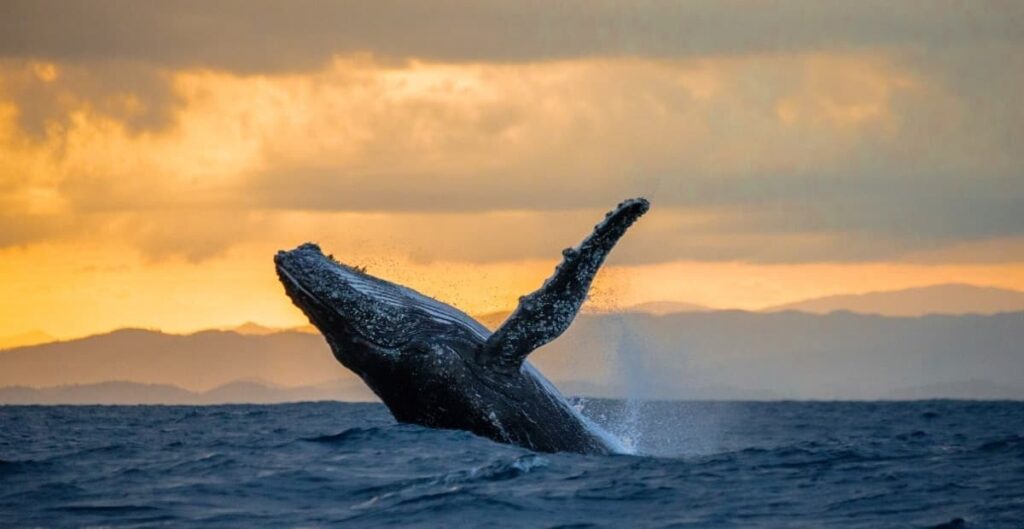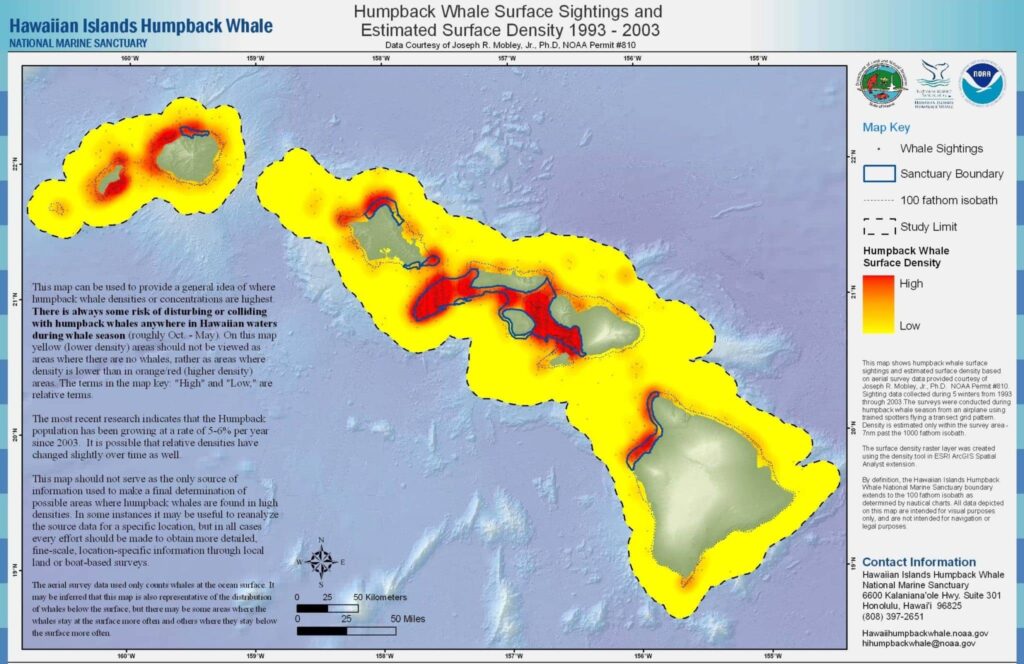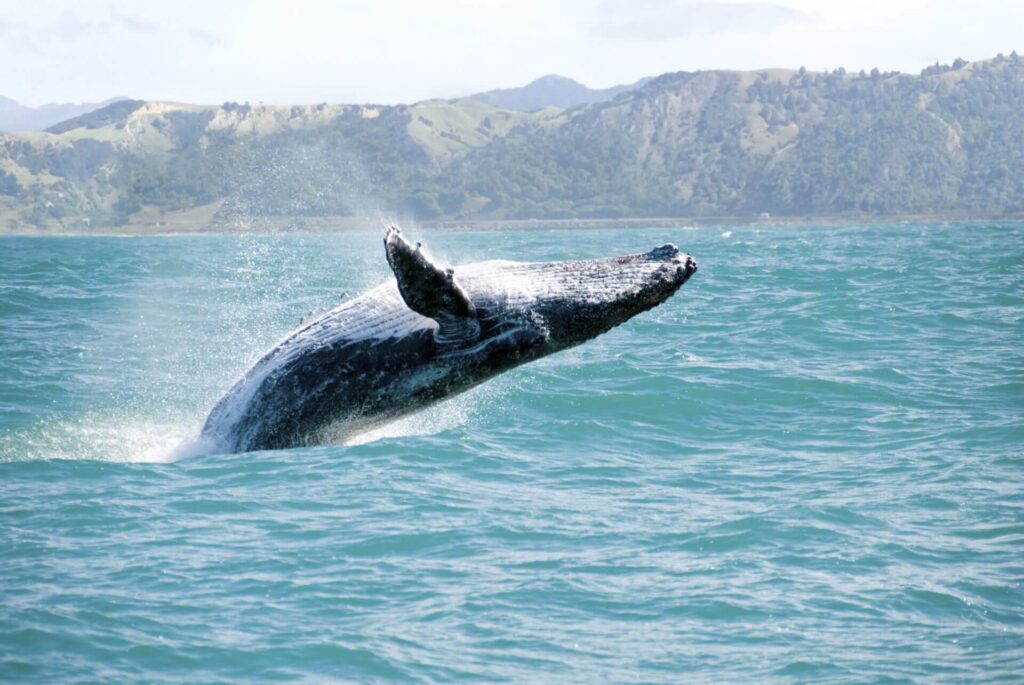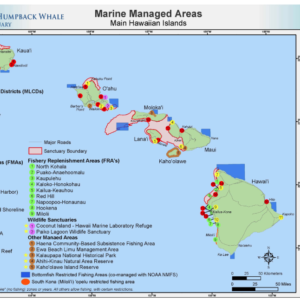If you find yourself visiting the stunning islands of Hawaii, you wouldn’t want to miss out on the incredible opportunity of witnessing these magnificent creatures in their natural habitat – the majestic humpback whales. But with so many options available, how do you choose the best way to see whales in Hawaii? From thrilling boat tours, breathtaking helicopter rides, peaceful kayak excursions to even spotting them from the shore, this article will guide you through the various ways you can experience the magic of whale watching and help you make the most out of your encounter with these gentle giants. So pack your camera, bring your binoculars, and get ready for an unforgettable adventure amidst the breathtaking beauty of Hawaii’s waters.
Best Times to See Whales
Winter is the Whale Watching Season
Hawaii is home to several species of whales, but one of the most iconic is the humpback whale. These majestic creatures migrate to the warm waters of Hawaii during the winter months, making it the best time for whale watching. From December to May, you have the opportunity to witness their incredible displays of breaching, tail slapping, and more. So if you want to increase your chances of spotting these magnificent mammals, plan your trip during the winter.
Morning and Afternoon are Ideal Times for Whale Watching
While whales can be seen throughout the day, the morning and afternoon are considered the optimal times for whale watching. During these times, the ocean tends to be calmer, making it easier to spot the distinctive blows or splashes of whales surfacing or breaching. Additionally, the lighting conditions during these times of the day provide better visibility, allowing you to capture amazing photos of these incredible creatures.
Matching the Tides for Optimal Whale Viewing
Another factor to consider when planning your whale watching adventure is the tides. High tides tend to bring the whales closer to the shoreline, increasing your chances of seeing them up close. It’s also worth noting that tides can affect the ocean’s currents, creating an environment that is more favorable for whale activity. To make the most of your whale watching experience, check the tide charts and plan your excursion accordingly.
Popular Whale Watching Spots in Hawaii
Maui – The Top Spot for Humpback Whale Watching
Maui is undeniably one of the best places in Hawaii for whale watching. The waters surrounding the island are teeming with humpback whales during the winter months, and it’s common to spot them breaching and engaging in other captivating behaviors. Some popular whale watching spots on Maui include Lahaina, Maalaea Bay, and the coastal areas near Kaanapali. Take a whale watching tour in Maui, and you’ll likely have an unforgettable encounter with these gentle giants.
Oahu – A Convenient Location for Whale Watching
If you’re looking for a convenient location to see whales in Hawaii, Oahu is a great choice. With the island’s bustling city of Honolulu and its close proximity to the ocean, you can easily hop on a whale watching tour without traveling too far. The waters around Oahu are frequented by humpback whales during the winter season, and you may even see them from the shore if you’re lucky. From Waikiki Beach to the North Shore, Oahu offers various vantage points for a memorable whale watching experience.
Big Island – Seeing Whales from Above and Below
The Big Island of Hawaii offers a unique whale watching experience as you can witness these magnificent creatures both from above and below the water’s surface. Take a scenic helicopter ride and soar above the coastline, catching glimpses of humpback whales as they swim in the crystal-clear waters below. Alternatively, embark on a whale watching boat tour and get a closer look at these gentle giants as they breach and play just off the coast. With its diverse range of whale watching options, the Big Island is a must-visit destination for any whale enthusiast.

Explore Uncharted Hawaiian Destinations
Whale Watching Tours
Booking a Tour for a Guided Experience
When it comes to whale watching in Hawaii, booking a tour is the best way to ensure a guided experience. These tours are led by knowledgeable and experienced guides who can provide interesting insights into whale behavior, migration patterns, and more. They also know the best spots to find the whales, increasing your chances of having close encounters with these magnificent creatures. Whether you prefer a large-group tour or a more intimate experience, there are plenty of options available to suit your preferences.
Choosing the Right Type of Whale Watching Cruise
When selecting a whale watching tour, it’s essential to consider the type of cruise that best suits your needs. From catamarans to sailboats and even smaller zodiac boats, each vessel offers a unique experience. Catamarans provide stability and comfort, making them a popular choice among families. Sailboats offer a more leisurely and eco-friendly option, allowing you to enjoy the serenity of the ocean. If you’re seeking a thrill, zodiac boats provide a more adventurous and up-close encounter with the whales. Consider your preferences and choose a tour that aligns with the experience you desire.
Considerations When Selecting a Tour Operator
With numerous tour operators to choose from, it’s important to do some research and select a reputable company for your whale watching adventure. Look for operators that prioritize the well-being and conservation of the whales. Check reviews from previous customers to get an idea of the quality of their tours and the knowledge of their guides. Additionally, consider the vessel’s safety measures and the overall professionalism of the staff. By selecting a reliable and responsible tour operator, you can have peace of mind knowing that your whale watching experience will be both enjoyable and respectful to the whales.
DIY Whale Watching
Scenic Lookouts for Whale Watching
If you prefer a more independent and budget-friendly approach to whale watching, Hawaii offers several scenic lookouts that provide excellent vantage points. Head to coastal areas with elevated viewpoints, such as Makapuu Point on Oahu or Puu Olai in Maui, and bring a pair of binoculars for a closer look. These lookouts offer panoramic views of the ocean, allowing you to spot the spouts and breaches of whales in the distance. While you may not get as close of a view as on a boat tour, the scenic beauty and the thrill of spotting whales from the shore make it a worthwhile experience.
Beachfront Whale Watching
Many of Hawaii’s beautiful beaches offer the opportunity for beachfront whale watching. Set up your beach chair, bring a picnic, and keep your eyes peeled for the telltale signs of whale activity. Look for spouts, splashes, or even the famous breach, which is when a whale propels itself out of the water and lands with a magnificent splash. Some popular beaches for whale watching include Kaanapali Beach in Maui, Hapuna Beach on the Big Island, and Sunset Beach on Oahu. Enjoy a relaxing day at the beach while keeping an eye out for these incredible creatures.
Using Binoculars for Better Views
If you want to enhance your whale watching experience, consider bringing a pair of binoculars. Binoculars allow you to see the whales closer and in greater detail, making it easier to observe their behavior and appreciate their immense size. Look for binoculars with a magnification power between 7x and 10x, as this range offers a good balance between zooming in on the whales and maintaining a steady image. With binoculars in hand, you’ll be able to spot whales even from a distance and have a more immersive whale watching experience.

Plan Your Dream Hawaiian Getaway
Whale Watching Safety
Observe Whales from a Safe Distance
While it’s exciting to see whales up close, it’s crucial to remember to observe them from a safe distance. The National Oceanic and Atmospheric Administration (NOAA) recommends staying at least 100 yards away from whales to avoid disturbing their natural behaviors. This distance is not only for your safety but also for the well-being of the whales. It’s important to respect their space and give them the freedom to move and behave naturally. By observing whales from a safe distance, you can enjoy their beauty without causing harm to these incredible creatures.
Respecting Whales’ Natural Behaviors
Whales have their own natural behaviors, and it’s essential to respect and appreciate them during your whale watching experience. These behaviors can include breaching, tail slapping, spy-hopping, or even vocalizing. Avoid approaching whales too closely or encroaching on their path, as this can disrupt their natural rhythm. By allowing whales to exhibit their behaviors without disturbance, you can witness their incredible displays and gain a deeper understanding of their lives in the ocean.
Guidelines to Avoid Disturbing Whales
To ensure that your whale watching experience remains respectful and safe, it’s important to follow certain guidelines. Avoid making sudden or loud noises, as these can startle the whales and negatively impact their behavior. Be mindful of your boat’s speed and movements to prevent collisions or disturbances in the water. Avoid entering the water if there are whales nearby, as this can be dangerous for both you and the whales. Lastly, never attempt to touch or feed the whales, as this can cause harm to them and is also illegal. By adhering to these guidelines, you can enjoy a responsible and ethical whale watching experience.
Whale Behavior and Characteristics
Understanding Whale Behavior and Anatomy
To fully appreciate whales, it’s helpful to understand their behavior and anatomy. Whales are mammals, not fish, and share many characteristics with other mammals, such as giving live birth and nursing their young. They have a streamlined body shape, a powerful tail used for propulsion, and a blowhole on top of their heads through which they breathe. Whales are also known for their complex communication systems and long migratory patterns. Understanding these aspects of whale biology can enhance your whale watching experience and deepen your connection with these incredible creatures.
Breaching, Tail Slapping, and Other Spectacular Displays
One of the most thrilling sights during whale watching is witnessing the spectacular displays of behavior that whales exhibit. Breaching, when a whale propels itself out of the water and lands back with a splash, is a breathtaking sight. Tail slapping, where a whale raises its tail fluke above the water and forcefully slaps it on the surface, is another mesmerizing behavior to watch. Whales may also engage in spy-hopping, where they rise vertically out of the water to observe their surroundings or vocalize to communicate with other members of their pod. Keep your eyes peeled for these displays as they showcase the incredible agility and power of these magnificent animals.
Insights into Whales’ Migratory Patterns
Whales undertake some of the longest known migrations in the animal kingdom, traveling thousands of miles each year. Understanding their migratory patterns can help you plan your whale watching trip more effectively. Humpback whales, for example, migrate from their feeding grounds in colder waters to warmer breeding grounds in Hawaii. They spend their summers in nutrient-rich areas such as Alaska, where they feed and build up energy reserves for their journey. By following these migratory patterns, you can increase your chances of encountering whales during their seasonal visits to Hawaii.

Experience Hawaii’s Unique Attractions
Whale Conservation and Research
The Importance of Protecting Hawaii’s Whales
Whales play a crucial role in marine ecosystems and are protected by various laws and regulations. Protecting Hawaii’s whales is essential for their continued survival and the health of the oceans. The presence of whales indicates a healthy ecosystem, as they contribute to nutrient recycling and the regulation of populations of other marine species. By supporting whale conservation efforts and practicing responsible whale watching, you can contribute to the preservation of these magnificent creatures and ensure their protection for future generations to enjoy.
Research and Conservation Organizations in Hawaii
Hawaii is home to several research and conservation organizations dedicated to the study and protection of whales. These organizations conduct scientific research, gather important data on whale populations, and work towards implementing conservation measures. Some notable organizations in Hawaii include the Pacific Whale Foundation, the Hawaiian Islands Humpback Whale National Marine Sanctuary, and the Cascadia Research Collective. By supporting these organizations through donations or volunteering, you can actively contribute to the conservation and research efforts aimed at protecting Hawaii’s whales.
How Individuals Can Help Protect Whales
As an individual, there are several ways you can help protect whales and contribute to their conservation. Firstly, practice responsible whale watching by following guidelines and regulations to minimize disturbance to the whales. Educate yourself and others about the importance of whales and the need for their protection. Reduce your carbon footprint to mitigate the effects of climate change, which poses a significant threat to whales and their habitats. Support local and international organizations dedicated to whale conservation through donations or participation in volunteer programs. By taking these actions, you can make a meaningful difference in the preservation of these magnificent creatures.
Photographing Whales
Preparing Your Camera for Whale Photography
If you want to capture stunning photos of whales during your whale watching adventure, it’s important to prepare your camera beforehand. Start by checking that your camera’s settings are appropriate for capturing fast-moving subjects. Set your camera to continuous shooting mode to increase your chances of capturing the perfect shot when a whale breaches or displays other fascinating behaviors. Adjust your focus settings to ensure sharp images, and consider using a telephoto lens to zoom in on the whales and capture finer details. It’s also recommended to bring extra batteries and memory cards to avoid missing out on any photographic opportunities.
Tips for Capturing Stunning Whale Photos
When photographing whales, timing and composition play a vital role in capturing stunning photos. Be patient and observant, anticipating the whales’ movements to capture their remarkable behaviors. Keep your camera ready and be prepared to snap a shot at a moment’s notice. Utilize the rule of thirds to compose visually appealing images, positioning the whale within the frame to create a sense of balance and interest. Experiment with different angles and perspectives to capture unique shots. And above all, remember to enjoy the experience and be present in the moment, as some of the most memorable photographs are often the result of being in the right place at the right time.
Responsible Whale Photography Practices
While photographing whales, it’s essential to prioritize their well-being and safety. Maintain a safe distance from the whales and avoid using flash, as this can startle or irritate them. Be respectful of their natural behaviors and never disrupt their movements to get a better photo. Refrain from approaching them too closely or staying in their path, as this can cause stress and distress. By practicing responsible whale photography, you can capture stunning images while ensuring the welfare of these remarkable creatures.

Whale Watching Etiquette
Respecting the Whales and their Environment
Respecting the whales and their environment is crucial when engaging in whale watching activities. Always approach these magnificent creatures with a sense of awe and wonder, understanding that you are a guest in their home. Keep noise levels to a minimum and avoid sudden or drastic movements that could disturb or scare the whales. Dispose of any trash or waste properly, as marine debris can harm whales and other marine life. By respecting the whales and their environment, you can cultivate a harmonious relationship with these incredible creatures and contribute to their overall well-being.
Considerations for Crowded Whale Watching Areas
In popular whale watching areas, it’s important to be mindful of the impact of large crowds on both the whales and the environment. Be patient and wait your turn to ensure that everyone has a fair opportunity to enjoy the spectacle. Follow the instructions of tour guides or naturalists to maintain order and minimize disturbance to the whales. Avoid overcrowding and give other spectators ample space to observe and photograph the whales. By practicing these considerations, you can help create a positive and respectful whale watching experience for everyone involved.
Etiquette when Interacting with Other Whale Watchers
When engaging with other whale watchers, it’s essential to be considerate and respectful. Avoid obstructing someone else’s view or getting in their way when they are trying to observe or photograph the whales. Be mindful of your voice volume, as loud conversations can distract or disrupt others’ experience. Share information or interesting sightings in a friendly manner, fostering a sense of community among fellow whale enthusiasts. By practicing good etiquette when interacting with other whale watchers, you can contribute to creating a positive and enjoyable atmosphere for everyone.
Other Wildlife to Spot While Whale Watching
Dolphins, Turtles, and Other Marine Life
While whale watching, it’s not uncommon to encounter other fascinating marine life. Dolphins, with their playful nature and acrobatic displays, are frequent companions to whales. Keep an eye out for these energetic creatures as they often swim alongside or in front of the whales. Sea turtles, too, may make an appearance, gracefully gliding through the water or basking on the surface. Other marine life you may spot includes manta rays, monk seals, and various species of fish. The diverse array of wildlife adds to the enchantment of your whale watching experience, making it a truly immersive adventure in Hawaii’s oceans.
Birds and Seabirds that Share the Ocean with Whales
Hawaii’s waters are also home to a rich diversity of bird species and seabirds that coexist with whales. Look up into the sky and you may spot graceful albatrosses soaring overhead or colorful tropicbirds darting across the horizon. Keep an eye on the water’s surface for the iconic sight of a frigatebird in flight or the comical behavior of a booby diving for fish. These birds and seabirds add another layer of beauty and fascination to your whale watching excursion, providing a captivating display of avian life intertwined with the majesty of the whales.
Discovering the Beauty of Hawaii’s Underwater World
While whale watching predominantly takes place from land or boats, it’s worth noting that Hawaii’s underwater world is just as mesmerizing. Consider taking a snorkeling or diving trip to explore the vibrant coral reefs that thrive beneath the surface. Snorkel amongst colorful fish, encounter playful dolphins, or even swim alongside gentle sea turtles. While not directly related to whale watching, these underwater adventures offer a unique perspective and allow you to appreciate the interconnectedness of Hawaii’s marine ecosystem. Take the opportunity to explore the underwater world and dive into an unforgettable experience.
